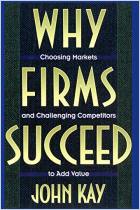Únase a getAbstract para acceder al resumen.

Únase a getAbstract para acceder al resumen.
Andrew Campbell, Jo Whitehead, Marcus Alexander and Michael Goold
Strategy for the Corporate Level
Where to Invest, What to Cut Back and How to Grow Organisations with Multiple Divisions
Jossey-Bass, 2014
¿De qué se trata?
A multidivision corporation needs a unified overall strategy plus strategies for specific units and products.
Recommendation
This overview of corporate strategy has the strengths of a good textbook. It moves through core concepts for developing strategy on the corporate level a step at a time, provides definitions and explains the underlying principles. It lists the issues in different strategic areas and distinguishes between major and minor concerns. Business management researcher Andrew Campbell – writing with fellow Ashridge Business School faculty members Jo Whitehead, Marcus Alexander and Michael Goold – provides context, historical background and tools executives can use to implement and apply the text’s concepts. This methodical approach provides great utility. However, also like most textbooks, the reading is a little dry, even when the concepts prove new and useful. getAbstract recommends this knowledgeable guidebook to anyone seeking a comprehensive overview of corporate strategy, to new leaders and to executives looking to raise their strategic game.
Summary
About the Authors
Andrew Campbell is the co-author of Corporate-Level Strategy, written with Marcus Alexander and Michael Goold. Jo Whitehead wrote What You Need to Know about Strategy. All four authors are directors of the Ashridge Strategic Management Centre.



















Comment on this summary